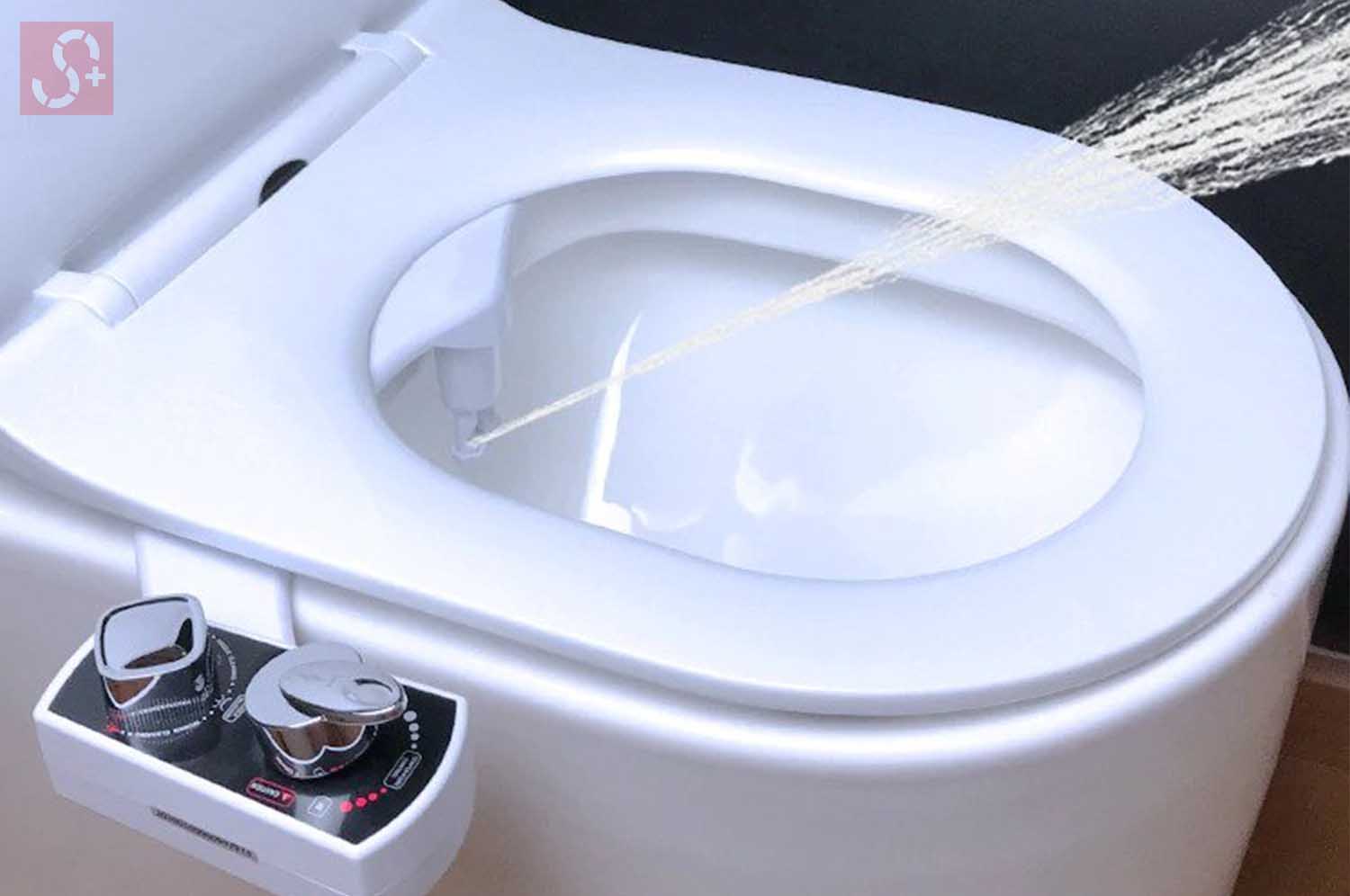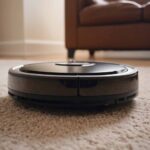These days the bidet is becoming more of a recognized bathroom fixture in North America.
People are requesting more and more for it to be installed in their homes. Many North Americans are starting to realize the valuable benefit of bidets.
If you’re new to using one, it shouldn’t be an intimidating task for you. I’ve owned a bidet for several years now, and it’s been an absolute game-changer in my family’s life!
I always say one of the best ways to learn is to dive right in! I know you’re here for the inside scoop, so here are some vital tips you should know if you’re using one for the first time. After urination, defecation, or during menstruation, turn the bidets water lever to on, then position your posterior region so that the stream of water released from the spigot will deliver the water to your desired nether region.
What is a bidet, and how do they work?
A bidet is a device used to divert water towards a person’s anus, genitals, inner gluteal crevice, and perineum in order to clean the areas following defecation, urination, during menstruation, sexual activity, or any behavior or instance that might compromise their cleanliness.
Situated near a toilet, the traditional bidet is of a similar height to the toilet and is straddled. A series of knobs, buttons, or levers would indicate the strength and direction of the water, and a spigot would deliver the water to the directed area. The classic bidet would, of course, have a drain.
Now that the technical explanation of a bidet is clear, here is the slightly more streamlined version, a bidet is like a toilet that squirts water at your posterior. That really does leave out a lot of the facts, though.
For instance, variations on the bidet are favored for the elderly or those with mobility issues. A variation is favored by doctors and nurses when bathing immobile patients. There are several classes of the bidet, and they all fit into a necessary framework.
Before you get acquainted with using a bidet, there are several questions you should be asking. For example-
What kinds of Bidets are there?
There are predominantly three kinds of bidet used internationally, with some variants arising as technology expands over time.
Currently a big hit in Japan, they’ve devised a toilet/bidet/air dryer that’s supposed to eliminate the use of toilet paper completely!
You can find similar high-tech inexpensive bidet seat add-ons like the ones you might see in Japan on Amazon Click here to see
However, until that glorious future is realized by many North Americans, the standard three you’ll typically see in the market are indicated here:
Hand-Held Bidet Sprayer.
This might sound a bit strange, but it’s actually an incredibly convenient device used by hospitals and nursing homes.
While sitting on the bidet bowl, the water is delivered to a hand-operated nozzle that acts much like a sink sprayer or a removable showerhead. Very handy for caregivers bathing patients.
Also quite lovely if you like to pay closer attention to detail than most people. This is usually just a hose and nozzle located next to your toilet, so no need to move to another device.
Don’t think of the bidet as a tool just for the elderly or the disabled. It works wonders for healthy, able-body men, women, or young children.
The (classic) Stand Alone Bidet.
Located somewhere near the toilet, you actually have to stand up without cleaning and transition to this other basin.
The fascinating thing about how to use the standalone bidet is, you literally get to choose which way you face when you sit on it. Do you straddle it, no pants, looking at the wall, so the spout and controls are facing your front?
Do you choose the pants around the ankles, facing away from the wall and kind of guessing at the controls? It’s usually only two knobs; it can’t be that hard.
Or, a personal favorite, do you take one pant leg off so you can transition your seating to more effectively cleanse both back and front?
Whatever you choose, always make sure to dry off with a small modicum of tissue paper or a nearby towel. Walking around with damp loins can be very uncomfortable.
The Add-On/retrofit Bidet
Growing in popularity since the mid 90’s, this style of bidet has become the standard. In countries that have used bidets as a common household item, they’ve upset the market on standalone bidets.
Yes, that’s right. There’s a competitive bidet market. Add-ons are much cheaper and can be attached to most standard existing toilet apertures.
Some, unlike other bidets, involve electricity to function, while others rely on the toilet’s own water pressure to operate. Regardless, they act very similar to different kinds of bidets.
For a standalone classic bidet, follow these steps.
- Take off your pants, straddle the Bowl, and position yourself facing the wall or away from the wall.
- Look at the controls. Use your contextual analysis. Read the labels. If you’re using a bidet in Kazakhstan, I don’t know what to tell you, but it should be pretty self-explanatory. Most classic bidets have knobs for cold and hot, and how much you open them should control the strength of the jet. We recommend warm and slow to start off with. If you’re not positioned right, the water can miss your posterior and shoot right outside the bowl and hit the floor or walls. So positioning is key!
- Switch seating position if necessary. Remember about the one pant leg?
- That’s it. Dry off. Go back to dinner.
Interesting history about bidets
I know you’re not here for a history lesson; you just want to know how to use a bidet. But the strange humble beginnings of the bidet will give you a newfound respect for this super hygienic toilet paper-saving tool.
From the beginnings of its recorded history in France, the bidet has alternately become a symbol of cleanliness, a hallmark of wealth, a profound resource in medical science, and a great topic to call on when chatting with Europeans.
In fact, in 1975, Italy declared the bidet mandatory in every bathroom in the country!
The bidet is a profoundly useful, consistently economic and eco-friendly tool that the world has benefitted from for almost three hundred years!
Which is why you should probably know how to work one. As more people start to use them in North America, they will begin to realize the vast benefits.
Bidets vs. toilet paper
Imagine walking in a park, and you stepped in dog feces. How would you clean your shoes? Most logical people would use water and wash it off. If that’s the case, why do most North Americans still use small squares sheets of paper to wipe their backside?
The average U.S. household of 2.6 people uses 409 equivalized regular rolls per year.
According to business insider, “Investing in a bidet seat or bidet attachment can lower your spending on toilet paper by 75% or more. You’ll also be saving some of the 384 trees that are cut down to make a single person’s lifetime toilet-paper supply”.
The toilet consumes 24% of your household water usage.
Check out this article I wrote: Turn Your Toilet Into A Money And Environment Saving Machine.
Is there anything else to know about bidets?
Yes, of course. There’s always more you can learn about anything. Research the area that you’re in, look up local customs, check out health codes.
If you’ve been diagnosed with a sexually transmitted disease, don’t use your friend’s bidet. Think logically, and keep in mind: not one bidet was built for all. When you walk into a strange bathroom and need to wash, just analyze your situation and do your best.
Bidets are used all around the world.
The bidet isn’t weird. It’s a useful and hygienic tool. In fact, most places on the planet consider it strange NOT to use one!
And the most common thing you’ll hear from those that have one installed in their bathroom is that they can’t live without it.








